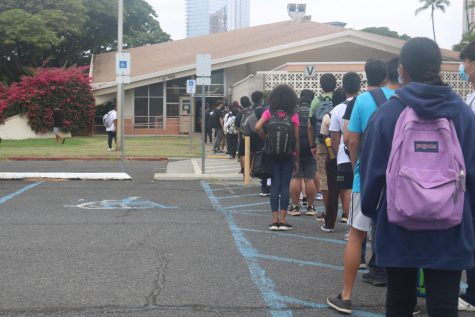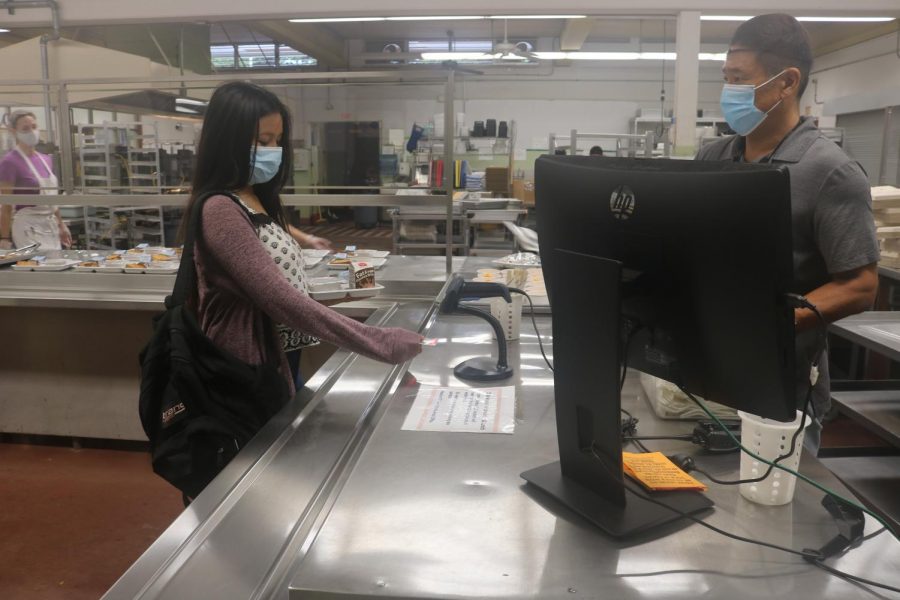THE LUNCH DILEMMA
Ramifications of COVID-19 regulation cause long lunch lines and food shortages
Cafeteria manager Mark Miura scans a student’s ID. Having your ID ready is heavily encouraged and helps move the line along faster.
December 11, 2021
The modification of the lunch schedule to curb the inappropriate behaviors on campus has discouraged students and many forgo lunch.
Students were not abiding by their assigned bell schedule, Vice Principal David Pila said,”They (students) had an hour and half lunch compared to those who had a 40 min lunch.”
“We had to allow everyone to have the same amount of time,” said Pila.
800-850 lunches, all paid for by the Department of Agriculture Federal Funds, were served during the first quarter; however, after the modified lunch schedule, there are only 500-650 lunches served.
Cafeteria manager Mark Miura said there are one to two hundred people stop coming.
“I wouldn’t want to wait in the long line too, but there is no other way to do it,“ said Miura.
Sophomore Christian Caoili said the long lines are factors from the modified lunch schedule. On the average, students are in line 20 to 25 minutes, which leaves them only 10 minutes to eat their food.
“The lines are so long. I’ve seen people have to run from across campus to get to the line early. It is bad. It is congested,” Caoili said.

Although Senior Hoku Baja said he remembers there were four lines, which were shorter and faster. Prior to the pandemic, students were able to serve lunch, but with COVID-19 regulations, only adult staff area allowed to serve .
Miura said food shortages are also affecting the menus which are misinforming and upsetting students.
Manufacturing problems are affecting food inventory. As a result, the food actually being served does not always match what students see on the menu.
“The vendors here, they can’t keep up with the demand from the schools,” Miura said .
With a shortage of flour, the cafeteria has been using chips as a replacement for the grain component due to the fluctuation in supplies
In addition to the adverse effects of long lines, Baja noticed that there are more people cutting in line.
Baja said, “Please do not cut. I know it is very irritating to have 5 minutes to eat your lunch, but there are other people who are really starving, and it just sucks when you are waiting and someone cuts in front of you so ALOHA.”
Having your IDs out and prepared to have them scanned is a solution to shorten the line and to improve the wait time Miura said .





